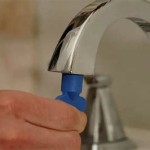The Best Methods for Removing Old Grout From Bathroom Tiles
Removing old grout from bathroom tiles is a common task for homeowners seeking to refresh the appearance of their bathrooms, address water damage, or prepare for tile repairs. Over time, grout can become stained, cracked, or even harbor mold and mildew, detracting from the overall aesthetic and potentially compromising the integrity of the tile installation. Successfully removing old grout requires careful planning, the right tools, and a methodical approach to avoid damaging the surrounding tiles.
Different methods exist for removing old grout, each with its own advantages and disadvantages. The choice of method often depends on the type of grout being removed, the condition of the tiles, and the homeowner's comfort level with various tools and techniques. The ultimate goal is to remove the grout effectively while minimizing the risk of chipping, scratching, or otherwise damaging the tiles.
Evaluating the Grout and Tile Condition
Before embarking on the grout removal process, a thorough assessment of the grout and tile condition is crucial. This evaluation will help determine the most appropriate removal method and identify any potential challenges. Key factors to consider include the type of grout, the extent of the deterioration, and the material of the tiles.
Grout comes in various types, including sanded grout, unsanded grout, and epoxy grout. Sanded grout is typically used for wider grout lines and contains sand to provide strength and prevent cracking. Unsanded grout is used for narrower grout lines and is smoother in texture. Epoxy grout is a more durable and water-resistant option, often used in high-moisture areas like showers and bathrooms. Identifying the type of grout is essential because different types may require different removal techniques. Epoxy grout, for instance, is generally more difficult to remove than sanded or unsanded grout.
The extent of grout deterioration can also influence the removal method. Minor staining or hairline cracks may be addressed with targeted cleaning and repair. However, if the grout is severely cracked, crumbling, or heavily infested with mold, a complete removal is usually necessary. A visual inspection can reveal the extent of the damage and help determine the scope of the project.
The tile material plays a significant role in selecting a suitable grout removal method. Certain types of tiles, such as natural stone, are more susceptible to scratching or chipping than ceramic or porcelain tiles. When working with delicate tiles, it is essential to use gentler methods and avoid aggressive tools that could cause damage. Similarly, porous tiles may be more prone to staining from grout residue, requiring extra care during the cleanup process.
Manual Grout Removal Methods
Manual grout removal methods rely on hand tools to chip away and scrape out the old grout. While these methods can be more time-consuming and physically demanding than power tool methods, they offer greater control and precision, reducing the risk of tile damage. Several manual tools are available for grout removal, each designed for specific purposes.
A grout saw is a specialized hand tool with a hardened blade designed to cut through grout. It typically features a triangular or V-shaped blade with abrasive edges that effectively grind away the grout. Grout saws come in various sizes and designs, including those with carbide-tipped blades for added durability. To use a grout saw, hold it at a slight angle to the grout line and apply steady pressure while moving it back and forth. It is important to avoid pressing too hard, as this could damage the tiles.
A utility knife or a sharp scraper can also be used to remove loose or crumbling grout. These tools are particularly effective for removing grout along edges and corners. When using a utility knife, exercise caution to avoid cutting yourself or scratching the tiles. A flexible scraper can be helpful for removing grout residue and smoothing out the grout lines.
Manual grout removal requires patience and attention to detail. It is best to work in small sections, carefully removing the grout without applying excessive force. Periodically cleaning the grout lines with a brush or vacuum can help improve visibility and prevent the buildup of debris. If the grout is particularly hard or stubborn, softening it with a grout softener or steam cleaner can make the removal process easier.
Power Tool Grout Removal Methods
Power tools can significantly speed up the grout removal process, particularly for larger areas or when dealing with stubborn grout. However, power tools also carry a higher risk of tile damage if not used carefully. Therefore, it is essential to choose the right tool and use it with precision and control.
A rotary tool, such as a Dremel, with a grout removal attachment is a popular choice for removing grout. These attachments typically consist of small, pointed bits that spin at high speeds to grind away the grout. Rotary tools offer good maneuverability and can be used to remove grout from narrow grout lines and tight spaces. When using a rotary tool, it is important to keep the bit moving and avoid dwelling in one spot, as this can generate excessive heat and damage the tiles. Using a slower speed setting can also help prevent overheating and improve control.
An oscillating multi-tool is another versatile power tool that can be used for grout removal. These tools feature a vibrating head that can be fitted with various attachments, including grout removal blades. Oscillating multi-tools provide a more controlled and precise cutting action than rotary tools, reducing the risk of tile damage. When using an oscillating multi-tool, hold it at a slight angle to the grout line and apply gentle pressure while moving it along the grout. Avoid forcing the tool, as this can cause it to slip or damage the tiles.
When using power tools for grout removal, it is essential to wear appropriate safety gear, including eye protection, a dust mask, and gloves. Power tools can generate a significant amount of dust and debris, which can be harmful to your health. It is also important to follow the manufacturer's instructions for the tool and attachment being used. Practice on a small, inconspicuous area first to get a feel for the tool and ensure that it is not damaging the tiles.
Softening Grout Before Removal
Regardless of the removal method chosen, softening the grout before attempting to remove it can significantly ease the process and reduce the risk of tile damage. Several methods can be used to soften grout, including chemical grout softeners and steam cleaning.
Chemical grout softeners are commercially available products designed to penetrate and dissolve grout. These products typically contain acidic or alkaline ingredients that weaken the grout's structure, making it easier to remove. When using a chemical grout softener, it is essential to follow the manufacturer's instructions carefully. Apply the softener to the grout lines and allow it to sit for the recommended amount of time before attempting to remove the grout. Be sure to ventilate the area well and wear appropriate protective gear, such as gloves and eye protection, when working with chemical grout softeners.
Steam cleaning is another effective method for softening grout. A steam cleaner uses high-temperature steam to loosen dirt, grime, and grout. The steam penetrates the grout, breaking down its structure and making it easier to remove. To use a steam cleaner, direct the steam nozzle along the grout lines, moving slowly and allowing the steam to penetrate the grout. After steaming, the grout can be removed with a grout saw, utility knife, or other appropriate tool.
In addition to chemical grout softeners and steam cleaning, applying a mixture of vinegar and water to the grout lines can also help soften the grout. Vinegar is a natural acid that can break down the minerals in grout, making it easier to remove. Mix equal parts vinegar and water in a spray bottle and spray the mixture onto the grout lines. Allow the mixture to sit for several minutes before attempting to remove the grout.
Cleaning Up After Grout Removal
Once the old grout has been removed, it is essential to thoroughly clean the area before applying new grout. This step is crucial for ensuring that the new grout adheres properly and that the finished result is clean and professional. Several cleaning methods can be used, depending on the type of tile and the amount of residue remaining.
Vacuuming the area is the first step in the cleanup process. Use a vacuum cleaner with a hose attachment to remove loose debris and grout dust from the grout lines and tile surfaces. Pay particular attention to corners and edges where dust tends to accumulate. Vacuuming will also help prevent the spread of dust and debris during subsequent cleaning steps.
After vacuuming, washing the tile surfaces with a mild detergent and water is recommended. Use a sponge or cloth to scrub the tiles and grout lines, removing any remaining grout residue. Rinse the area thoroughly with clean water to remove any soap residue. For stubborn stains or grout haze, consider using a specialized tile and grout cleaner. Follow the manufacturer's instructions for the cleaner being used and test it in an inconspicuous area first to ensure that it does not damage the tiles.
Finally, allow the tiles to dry completely before applying new grout. Moisture can interfere with the adhesion of the new grout and lead to problems such as cracking or discoloration. Use a clean, dry cloth to wipe down the tiles and grout lines, and allow the area to air dry for several hours or overnight. Once the tiles are completely dry, the area is ready for new grout to be applied.

How To Remove Old Grout

Can I Put New Grout Over My Old The Medic

7 Most Powerful Ways To Clean Tiles Grout Naturally

How To Remove Grout From Tile A Complete Diy Guide

How To Regrout Tiles Without Removing Old Grout

How To Regrout Bathroom Tile In 5 Easy Steps True Value

How To Clean Grout Cleaning Stains

How To Remove Dried Grout From Tile Alliance Flooring Directory

How To Easily Regrout Your Bathtub Walls Without Removing Old Grout Noting Grace

Easy Diy Guide On Removing Tiles From Walls Fantastic Handyman Au
Related Posts







